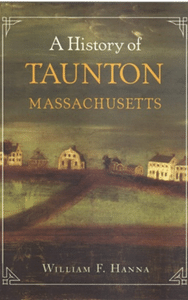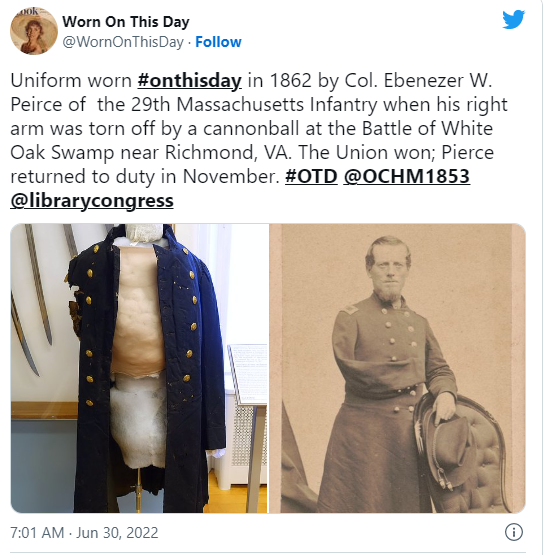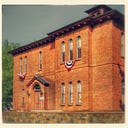The Authors of the Old Colony: A Summer Reading List (If You Dare)
By Eric B. Schultz
The Old Colony stretches from Rehoboth to Provincetown and from Scituate to Dartmouth. It is the historic home of New Bedford’s whaling fleet and Fall River’s textile factories, the Ames brothers’ shovels and Reed & Barton’s silver. Its soldiers and political leaders range from Myles Standish and Robert Treat Paine to Major General Darius Nash Couch and the brave WWII American GIs buried at the Normandy American Cemetery.
Old Colony is home to beautiful beaches, pristine lakes and ponds, and undoubtedly the country’s most famous rock.
And it is also home to a literary tradition that stretches back to the Pilgrims. Its towns are the birthplace, home, and inspiration for centuries of poets and authors.
With that in mind, we have assembled below a short list of works with lasting connections to the Old Colony, some of which you’ll want to add to your 2022 summer reading list.
10. Of Plymouth Plantation, William Bradford (1651)

Bradford’s journal is considered the authoritative account of the Pilgrims’ founding of Plymouth Colony. He captures their experience from 1608 in Holland to 1651, including a “where are they now?” section. Bradford wrote in hopes that the children of the First Comers “may see with what difficulties their fathers wrestled.” Spoiler alert: He mentions no rock.
For readers who might like to pair this primary source with a more recent telling, Nathaniel Philbrick’s Mayflower was a New York Times Best 10 book in 2006 and a great read. And for those who like to mix romantic myth with their history, there is no better Old Colony love story than Henry Wadsworth Longfellow’s 1858 poem, The Courtship of Miles Standish.
9. A History of Taunton, Massachusetts, William F. Hanna (2007)

In the years following the American Revolution, as the country survived the War of 1812 and the Civil War, patriotic citizens realized that their nation might last and its history be worth preserving. Many an enthusiastic amateur historian wrote about his Old Colony town.
One example is Nahum Mitchell’s History of the Early Settlement of Bridgewater in Plymouth County, Massachusetts: Including an Extensive Family Register (1840). Music teacher, composer, and Federalist Representative to the 8th US Congress, Mitchell wanted his reader to see “every link of the chain connecting them with their first American ancestor.” Nearby, Thomas Weston’s History of the Town of Middleboro, Massachusetts (1906) was authorized by vote of the town in 1894. “This volume should have been written fifty years ago,” Weston wrote,” when the people familiar with the town’s earliest history were still alive. Nonetheless, Weston’s and Mitchell’s works are both still highly valued and often consulted in the reading room of the Old Colony History Museum.
In Taunton, the book that served as the go-to local history for a century was published in 1893 by the Rev. Samuel Emery Hopkins. However, 125 years of new research and historical perspective have provided us with the opportunity to refresh some of these nineteenth-century histories. For Taunton, that new, vastly improved work appeared in 2007 when Dr. William Hanna published his History of Taunton, the first comprehensive history of the city. “Unlike earlier works,” Hanna said, “it examines the role of women, immigrants and working people in the growth of an important industrial, transportation and commercial center in Southeastern Massachusetts.”
The book is a bonus not just for residents of Taunton but for those in the Old Colony towns of Easton, Mansfield, Norton, Dighton, Raynham, Berkley, and Lakeville, all of whom share in Taunton’s early history.
8. The Commonwealth of Massachusetts vs. Lizzie A. Borden: The Knowlton Papers, 1892–1893, edited by Michael Martins and Dennis A. Binette (1994)

Much has been written about Lizzie Borden, and perhaps too much in the vein of speculative, lurid, “true crime.” Better to go to a reliable source — in this case, the Fall River Historical Society. In 1994, the Society published The Knowlton Papers, “a great compilation of unpublished papers and correspondence belonging to the prosecutor, Hosea Knowlton,” OCHM curator Bronson Michaud says.
A second related volume published by the Society in 2011 is Parallel Lives: A Social History of Lizzie A. Borden and Her Fall River. Both books are impeccably researched, the perfect place to begin an exploration of one of the Old Colony’s most famous trials.
As an appetizer, in the summer of 2020, the Old Colony History Museum’s blog on Medium featured a two-part series, “Lizzie Borden and the Taunton Jail,” describing Borden’s 283 nights locked up in the old Bristol County jail. Residents of Taunton might still catch a whiff of the corned beef hash Borden was served twice a week as they drive by the former location of the jail at the corner of Hodges and Chandler Avenues.
7. The Chancellorsville Campaign, Maj. General Darius N. Couch (1863)

A native New Yorker and West Point graduate, Darius Nash Couch served with distinction in the Mexican-American War. He came into the gravitational pull of the Old Colony in 1855 when he married the daughter of Samuel L. Crocker, one of Taunton’s most prominent industrialists. Arriving in the city in 1858, Couch joined his father-in-law’s firm, the Taunton Copper Company, and lived with his family at 6 Pleasant Street — a building that still stands next to the Taunton Public Library.
At the start of the Civil War, Couch led the 7th Massachusetts Infantry and went on to an honorable though often frustrated command under Generals Ambrose Burnside and “Fighting Joe” Hooker. Couch would become Hooker’s second-in-command at Chancellorsville, considered Robert E. Lee’s greatest victory.
Couch’s report about the Chancellorsville campaign is a colorful, bird’s-eye view of what Civil War command and soldiers faced. It is also an indictment of Hooker. “In looking for the causes of the loss of Chancellorsville,” Couch wrote, “the primary ones were that Hooker expected Lee to fall back without risking battle. Finding himself mistaken he assumed the defensive, and was outgeneraled and became demoralized by the superior tactical boldness of the enemy.”
Maj. General Darius Nash Couch is buried at the Mount Pleasant Cemetery on Crocker Street in Taunton. Readers should check the OCHM calendar for monthly cemetery tours, which happen on the fourth Saturday throughout much of the year and include the Mount Pleasant Cemetery from time to time.
6. An Introduction to the Study of Landscape Design, Henry Vincent Hubbard (1917)

While an academic book on landscape design may not be the perfect beach read, Henry Vincent Hubbard’s text was required reading for generations of Harvard students.
Born in Taunton in 1875, Hubbard became the first student at Harvard to be awarded a Bachelor of Science in landscape architecture. After graduation, he joined the Olmsted Brothers firm, being run by the founder’s son, Frederick Law Olmsted, Jr. Hubbard also taught landscape architecture at Harvard (for 33 years beginning in 1906) and later founded his own firm, Pray, Hubbard & White. After a stint in Washington, D.C. during World War I, Hubbard rejoined Olmsted Brothers, where he became a partner in 1920 and went on to work closely with J.K. Milliken and his team at Mount Hope Finishing Company in the design of the streets and landscapes of North Dighton.
Hubbard became an enthusiastic supporter and contributor to America’s national parks, spending two decades as a planning consultant. His work includes the landscape design around the Jefferson Memorial.
Renowned for his teaching style, Henry Hubbard challenged students to solve real-life design problems. From this pedagogy, he conceived An Introduction to the Study of Landscape Design, the “bible” for generations of architectural design students. Hubbard’s co-author was Theodora Kimball (born in 1887 in West Newton), whom he married in 1924. Kimball was a force herself, having earned a master’s degree in Library Science from Simmons College and working as an editor at the New England Historical and Genealogical Register before being named the first Librarian at Harvard’s School of Landscape Architecture.
Henry Vincent Hubbard is buried at the Mount Pleasant Cemetery not far from Major General Couch.
5. Life Histories of North American Birds (1919–1968), Arthur Cleveland Bent

Not far from Hubbard and Nash in Taunton’s Mount Pleasant Cemetery rests Arthur Cleveland Bent, another giant of the Old Colony and one of its most prolific authors. Born in Taunton in 1866, Bent graduated from Harvard in 1889 and embarked on a successful business career that included the purchase and Presidency (1900–1931) of Plymouth Electric Light Co. From 1900 to 1914, he also served as general manager of Mason Machine Works and took board or ownership positions in a dozen corporations and utilities. He was a gifted leader with an inexhaustible supply of energy.
Bent holds a special place in the hearts of members of the Old Colony History Museum because he spent seven years as a schoolboy roaming the classrooms of our elegant building on Church Green when it was still Bristol Academy. He was one of nine members of Taunton’s first Municipal Council in 1910, president of the Bristol County Academy of Sciences, president of the Taunton Chamber of Commerce, Trustee of the Taunton Savings Bank, and president of the Segregansett Country Club.
Bent’s interest in birds began as a youth when “birdnesting” — the collection and study of eggs, or oology — was considered an appropriate hobby. Bent was so successful that he eventually donated a collection of some 30,000 eggs to the U.S. National Museum in Washington. His birding trips took him from North Dakota to the Aleutian Islands and from California to Texas and Florida. For many years he and his family had a home in Harwich, making Monomoy one of his favorite birding locations.
In 1910, Bent engaged with the Smithsonian Institution to write “6 large volumes” of “Life Histories of North American Birds.” Despite all his other business and civic activities, he believed this project would be his life’s work, and he was correct. By the time Arthur Bent died in 1954, he had engaged with some 800 collaborators to produce 21 volumes that are today considered “literary landmarks” and “the durable foundation on which almost all other compilations of North American bird biology . . . rest.”
When a modern birder picks up his Sibley’s or Peterson’s field guide, he benefits from the monumental efforts of Taunton’s Arthur Cleveland Bent.
4. Indian History, Biography, and Genealogy, Ebenezer W. Peirce (author) and Zerviah Gould Mitchell (publisher) (1878)

“My object in bringing this work before the public is not only to show that I am a lineal descendant, in the seventh generation, from the great and good Massasoit,” Zerviah Gould Mitchell wrote in the Preface, “but also to make record of the wrongs which during all these generations have been endured by my race.”
Born in North Abington in 1807 and the mother of 11 children, Mitchell moved to Betty’s Neck in Lakeville in 1859. Involved in a long-running dispute with the state of Massachusetts over her ancestral land, she enlisted the help of Ebenezer W. Peirce. A native of Assonet and brigadier general in the Civil War, he had lost his right arm at the Battle of White Oak Swamp.
Peirce was an enthusiastic amateur historian (not to mention a lifetime member of the Old Colony Historical Society) who worked with Mitchell to detail Massasoit’s genealogy and tell the story of Plymouth Colony and King Philip’s War from a Wampanoag perspective. Their narrative is a helpful counterpoint to the histories of the war offered by Puritan ministers.
On a visit to Anawan Rock and the scene of Capt. Benjamin Church’s heroic capture of Philip’s war chief, for example, Peirce wrote:
I am nineteen years older than Capt. Church was when he performed this feat that has been wondered at and applauded for more than two hundred years, and in that nineteen years I have grown, as Church would express it, “ancient and heavy” as well as clumsy; he had two strong arms and two very active hands, while I have but one arm, and one hand and that an awkward left one; and yet I passed down the rock and passed up again without the aid of boughs or bushes, and in fact experienced less difficulty in doing so than in getting over many an ordinary stone wall. (207)
Mitchell became a celebrity, receiving numerous visitors at Betty’s Neck from luminaries such as Henry Wadsworth Longfellow. Upon her death in 1898, the Fall River Daily Herald pronounced Zerviah a “familiar figure to Tauntonians” and “the last living Indian princess in the country.”
Our Twitter followers recently saw saw Peirce’s uniform coat featured by @WornonThisDay. This coat is in the collection of the Old Colony History Museum.

3. Life on Mars, Tracy K. Smith (2011)

Poet Tracy K. Smith was raised in California but was born in Falmouth, Massachusetts, in 1972, a daughter of the Old Colony. In 2012, her collection of poems, Life on Mars, won the Pulitzer Prize. Smith was named the 22nd Poet Laureate of the United States in 2017.
In her poem, “Everything That Ever Was” from Life on Mars, she writes:
Like a wide wake, rippling
Infinitely into the distance, everything
That ever was still is, somewhere,
Floating near the surface, nursing
Its hunger for you and me
And the now we’ve named
And made a place of.
I could swear those passages are about the Old Colony History Museum and its rich archives. (Of course, I remain open to other interpretations.)
In honor of Juneteenth 2022, Smith shared her own and the works of other Black poets on an “Up First” segment at NPR.
2. Joe Martin: My First Fifty Years in Politics, Robert J. Donovan (1960)

Born in North Attleborough and a graduate of North Attleborough High School, Joseph Williams Martin, Jr. worked himself up from a delivery boy to managing editor and owner of the Evening Chronicle. A lifelong Republican, he was first elected in 1912 to the Massachusetts House of Representatives and by 1925 to the US House of Representatives. In the late 1940s and early 1950s, Martin served as the 44th Speaker of the House, the only Republican to hold that position between 1935 and the election of Newt Gingrich in 1995.
From Calvin Coolidge and FDR to Douglas MacArthur, Eisenhower and Sam Rayburn to Margaret Heckler (who defeated Martin in the Republican primary of 1966), Joe Martin’s political career spanned the heart of the twentieth century. The story told by Donovan is colorful, sometimes triumphant and other times politically painful, and a reminder of the Old Colony’s impact on national politics through the years.
1. Moby-Dick, or, The Whale, Herman Melville (1851)

Melville was born in New York City and wrote most of this novel on his farm in Pittsfield, Massachusetts, but there’s no mistaking the profound influence of the Old Colony on this work. In January 1841, young Herman departed for the Pacific from New Bedford, the world’s whaling capital, as a sailor aboard the whaler Acushnet. His novel flows from these experiences.
Moby-Dick was a commercial failure when published and out of print when Melville died. However, the story was rediscovered in the early 20th century and today stands as one of the great American novels, with “Call me Ishmael” perhaps the most famous opening line in American literature. Each January, the New Bedford Whaling Museum hosts a 25-hour Moby-Dick readathon.
For a masterful telling of “the rest of the story,” pair Melville’s work with Sena Jeter Naslund’s Ahab’s Wife: Or, The Star-Gazer: A Novel (1999). Naslund tells the fictional tale of Una Spenser, whose opening line — “Captain Ahab was neither my first husband nor my last” — rivals “Call me Ishmael” in its potential.
If you find yourself on the beach this summer with any of these literary choices, please send OCHM a selfie. Extra credit if you are more than halfway through Moby-Dick. Double credit if your summer reading is a textbook about landscape design.

